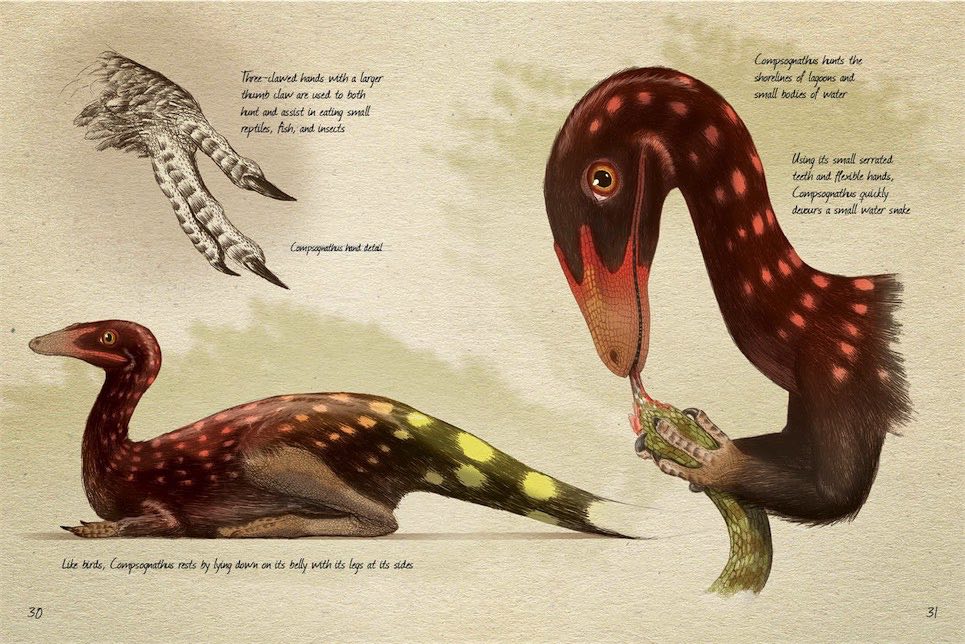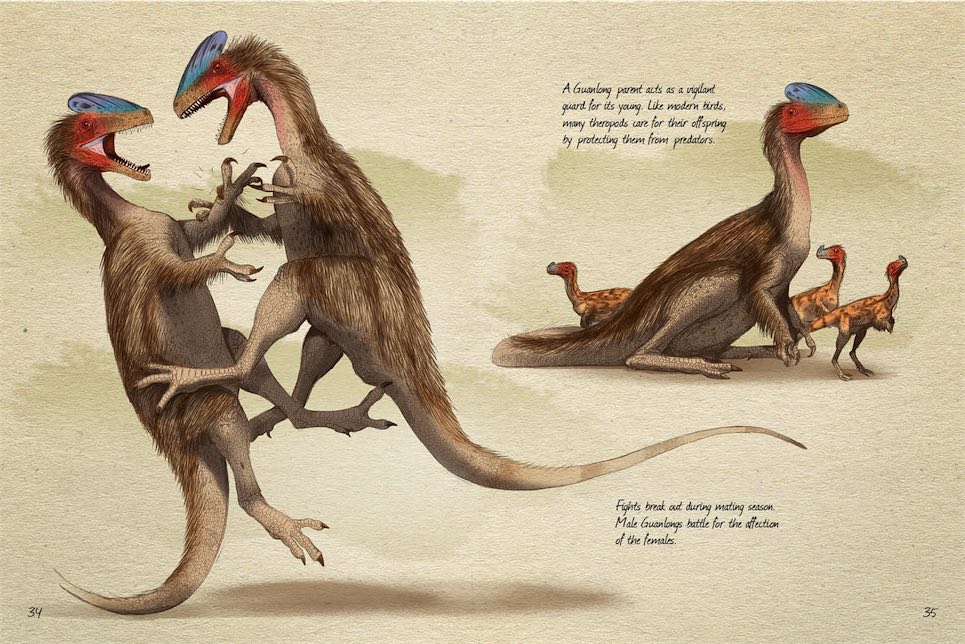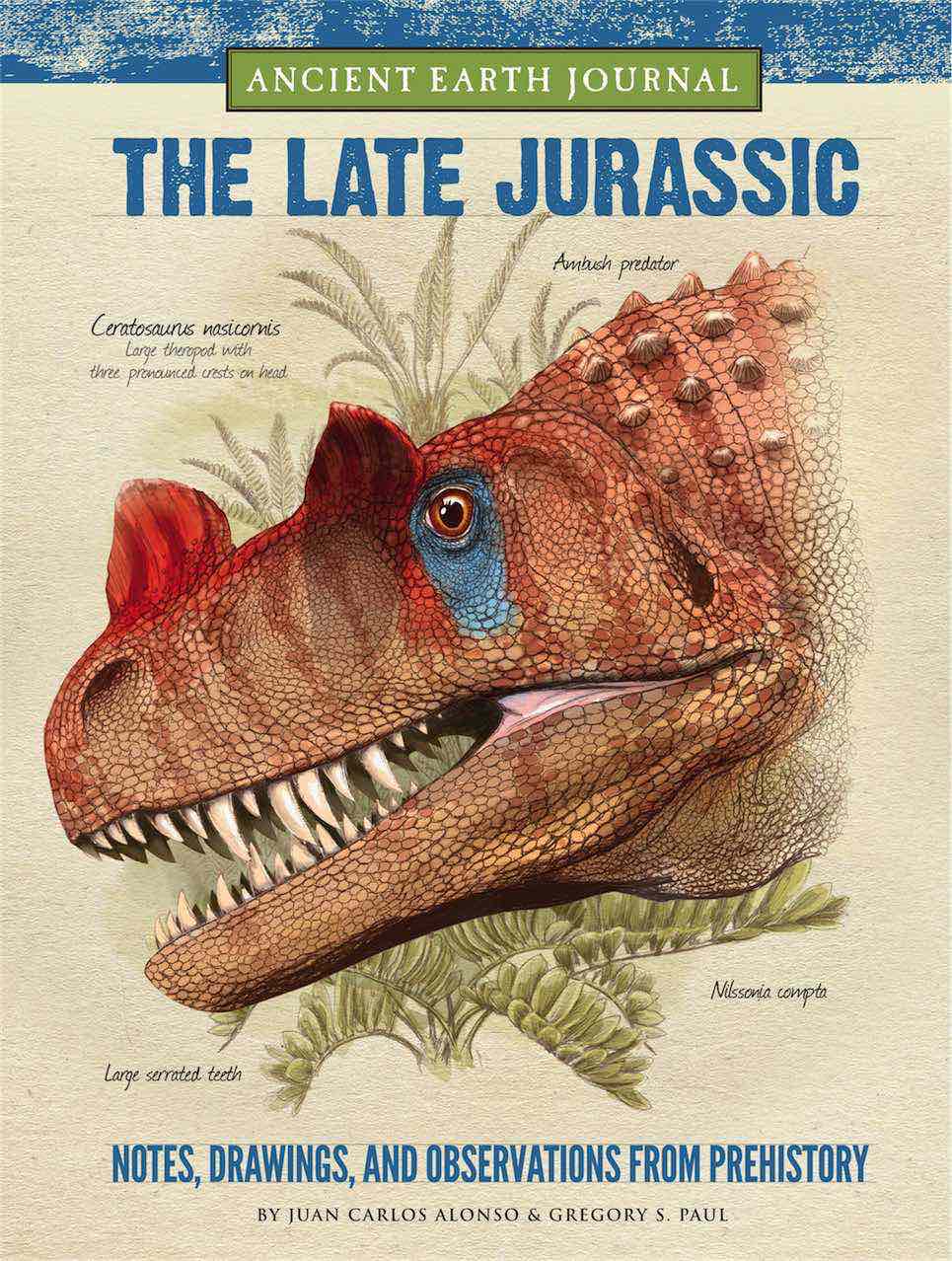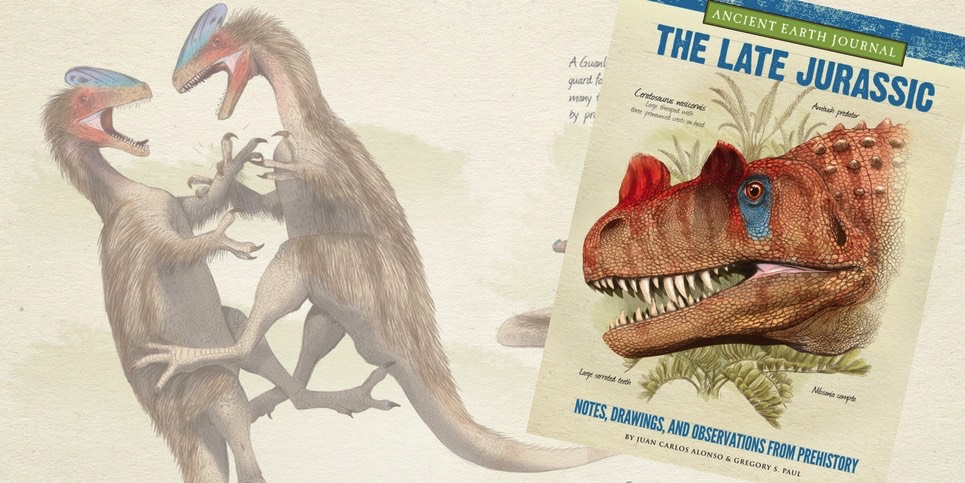Juan Carlos Alonso | The Children’s Book Review | September 12, 2016
The art of recreating prehistoric life has been coined paleoart (paleo for paleontology) fairly recently and has become a growing segment of scientific art. Its origins date back to the 1800s when dinosaurs were beginning to capture the imagination of the world. At about this time, Charles R. Knight became one of paleoart’s most notable artists. He was one of the first to bring dinosaurs to life, in a naturalistic way. Like any movement in art, it builds on itself. Artists inspired by Knight’s and other’s work carried on their legacy by using new techniques and applying own style to create unique visions of the prehistoric world.
Truth is, when it comes to prehistoric life, we have very few pieces of data to construct from. To start with, fossils are not even the actual bones of an extinct animal, but the minerals that filled the void left by the bone. And in most cases, the fossils themselves are crushed and misshaped by millions of years of geological pressure. Not to mention, most dinosaur skeletons are incomplete with some species being reconstructed by just a few vertebrae. So, there is some interpretation of the skeletal structure before any artist can begin to refer to it as a starting point. Once the skeleton is painstakingly constructed in either two or three dimensions, it gives a good indication of how muscles attached to bone and begins to roughly “fill out” the specimen. Still, there is quite a bit of artistry that comes into play, soft tissue can be very tricky. Take an elephant for instance, there are features like the trunk and the ears that make an elephant look like an elephant. Yet, when you look at its skeleton, there is no visible evidence of these features.

There are also other pieces of the puzzle that come in the form of fossilized skin or feather impressions; these help shape the outer surface of the animal but these are even more rare than the fossilized bones. Fossilized footprints or trackways left behind also shine a light on how the animal moved and even at what speed. The problem is, there is no confirmation of which species left which print. All of these are used as scientific evidence to piece together an animal that existed tens of millions, or in some case hundreds, of millions of years ago. But it’s the not knowing that makes prehistoric life so intriguing.
 The gaps left between the evidence and interpretation is what draws me to paleoart and fuels my desire to understand what life must have been like so long ago. For me, it is a perfect combination of science and art – both structured with facts yet open to artistry. The process of creating a life restoration of an extinct animal is almost like detective work: lots of research and tying together small pieces of clues, all ending with a sound conclusion. Studying existing nature is the best way to understand and approach paleoart. We tend to think of dinosaurs as mythical beasts whereas they were just animals — just like today’s animals, each trying to survive and ensure life for their bloodline. Each discovery unveils new truths about these fascinating animals and all point to how each was part of nature and the formation of the world we know now.
The gaps left between the evidence and interpretation is what draws me to paleoart and fuels my desire to understand what life must have been like so long ago. For me, it is a perfect combination of science and art – both structured with facts yet open to artistry. The process of creating a life restoration of an extinct animal is almost like detective work: lots of research and tying together small pieces of clues, all ending with a sound conclusion. Studying existing nature is the best way to understand and approach paleoart. We tend to think of dinosaurs as mythical beasts whereas they were just animals — just like today’s animals, each trying to survive and ensure life for their bloodline. Each discovery unveils new truths about these fascinating animals and all point to how each was part of nature and the formation of the world we know now.
***
 Ancient Earth Journal: The Late Jurassic: Notes, drawings, and observations from prehistory
Ancient Earth Journal: The Late Jurassic: Notes, drawings, and observations from prehistory
Illustrated by Juan Carlos Alonso
Publisher’s Synopsis: Through detailed illustrations and descriptive narrative, readers will experience a thrilling, thoroughly enjoyable ride through the most popular time period of prehistory.
What would it be like to see a living, breathing dinosaur? Following in the footsteps of Ancient Earth Journal: The Early Cretaceous, this next installment, The Late Jurassic, will take readers further back in time to a period when giants ruled the land and early mammals began to secure their place alongside the dinosaurs. The Late Jurassic period was home to many species of our favorite dinosaurs, such as Apatosaurus (or Brontosaurus), Allosaurus, and Stegosaurus, to name a few. The Late Jurassic includes the latest paleontological findings to build an accurate depiction of the dinosaurs, environment, and wildlife of the period. Due to the abundance of fossils available for both plants and animals of this period, the book paints a vivid, realistic picture of the flora and fauna of the time, with more emphasis on hunting and defensive tactics, as well as early mammals and their role in the planet’s evolution, for a thrilling, thoroughly enjoyable ride through the most popular time period of prehistory. Written and illustrated in the style of a naturalist’s notebook, the reader is given a first-hand account of what it would be like to stand alongside some of the largest creatures to ever walk the earth.
Ages 8-11 | Publisher: Walter Foster Jr | September 1, 2016 | ISBN-13: 978-1633221086
Available Here:
About Juan Carlos Alonso

Juan Carlos Alonso is a Cuban American graphic designer, creative director, and illustrator. He has over 30 years experience in the graphic design/illustration field. In 1992, he founded Alonso & Company, a creative boutique specializing in branding, design, and advertising. He has been working with clients of all sizes from Fortune 500 to local businesses and has forged strong relationships with companies including the NBA franchise The Miami Heat, Bacardi Rum, Ryder System, Pitney Bowes, and Capitol Records. Alonso & Company has attained international acclaim for work in advertising and graphic design. His passion for nature has taken him around the world from Australia to the Galapagos Islands to study animals. Along with his work in the graphic arts, he is also an accomplished wildlife sculptor focusing mostly on prehistoric animals.
For more articles like “Paleoart: The Art of Illustrating Dinosaurs,” follow along with our posts tagged with Art Of Illustration, Dinosaurs, Gregory S. Paul, and Juan Carlos Alonso.

